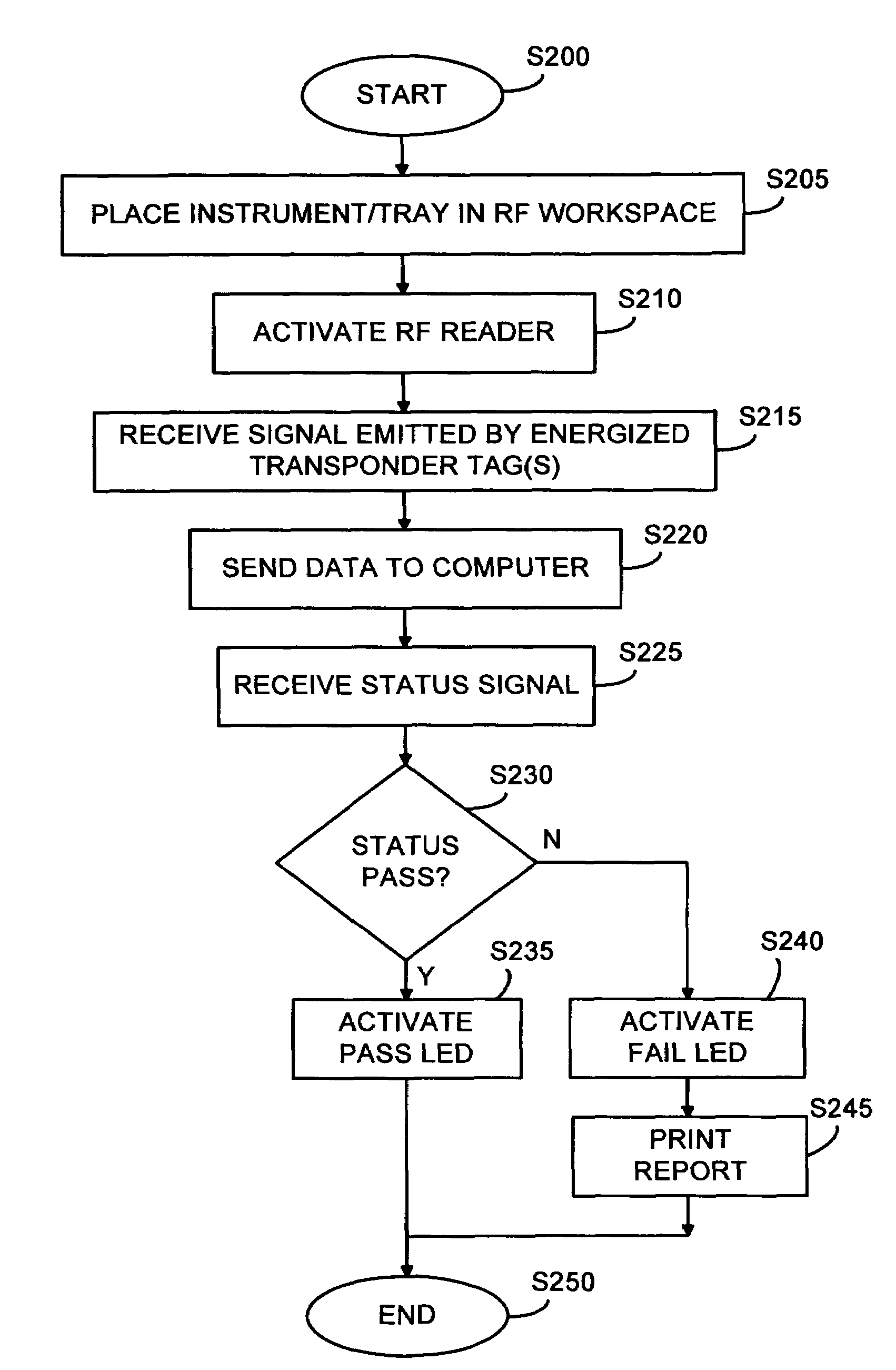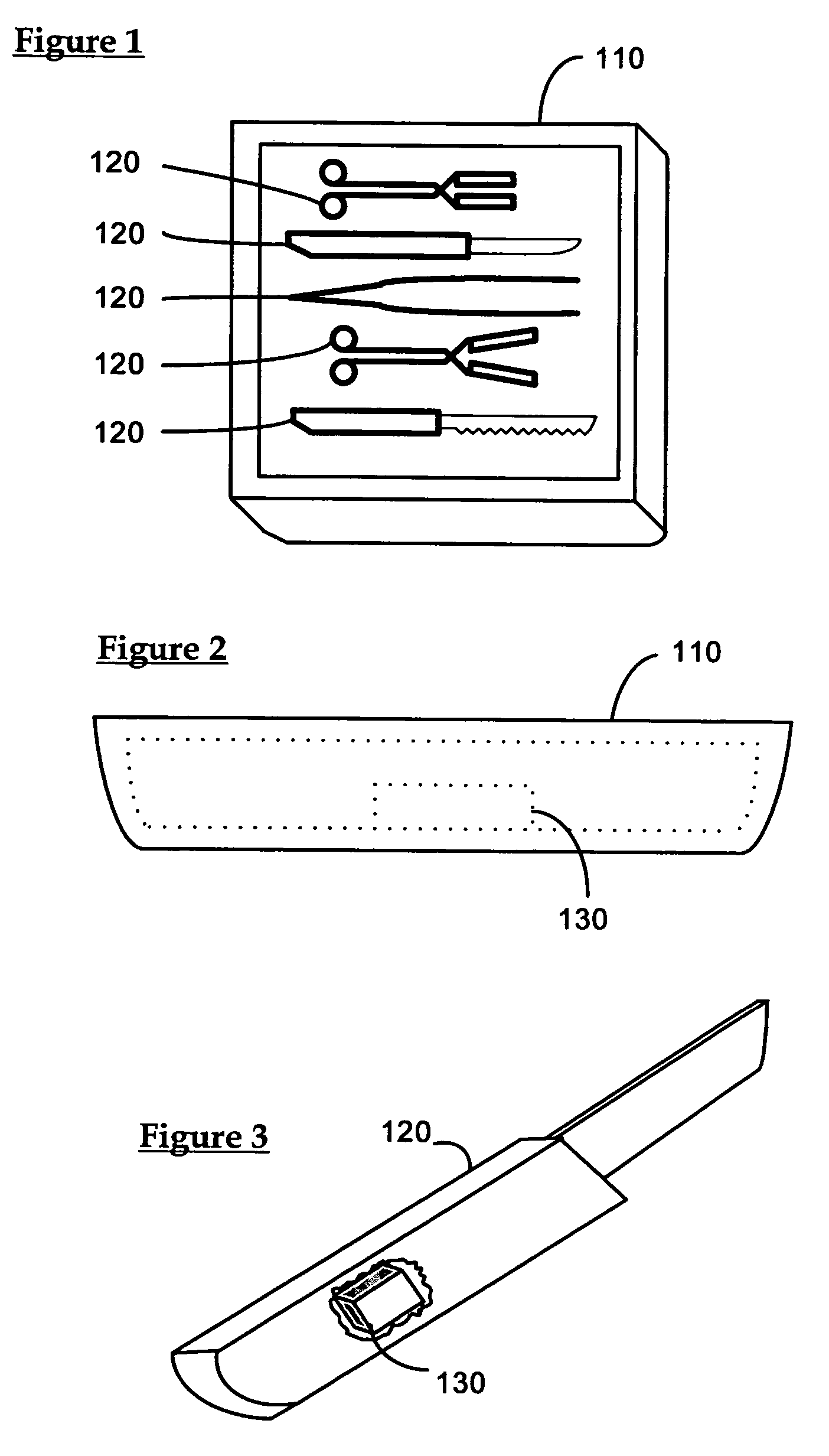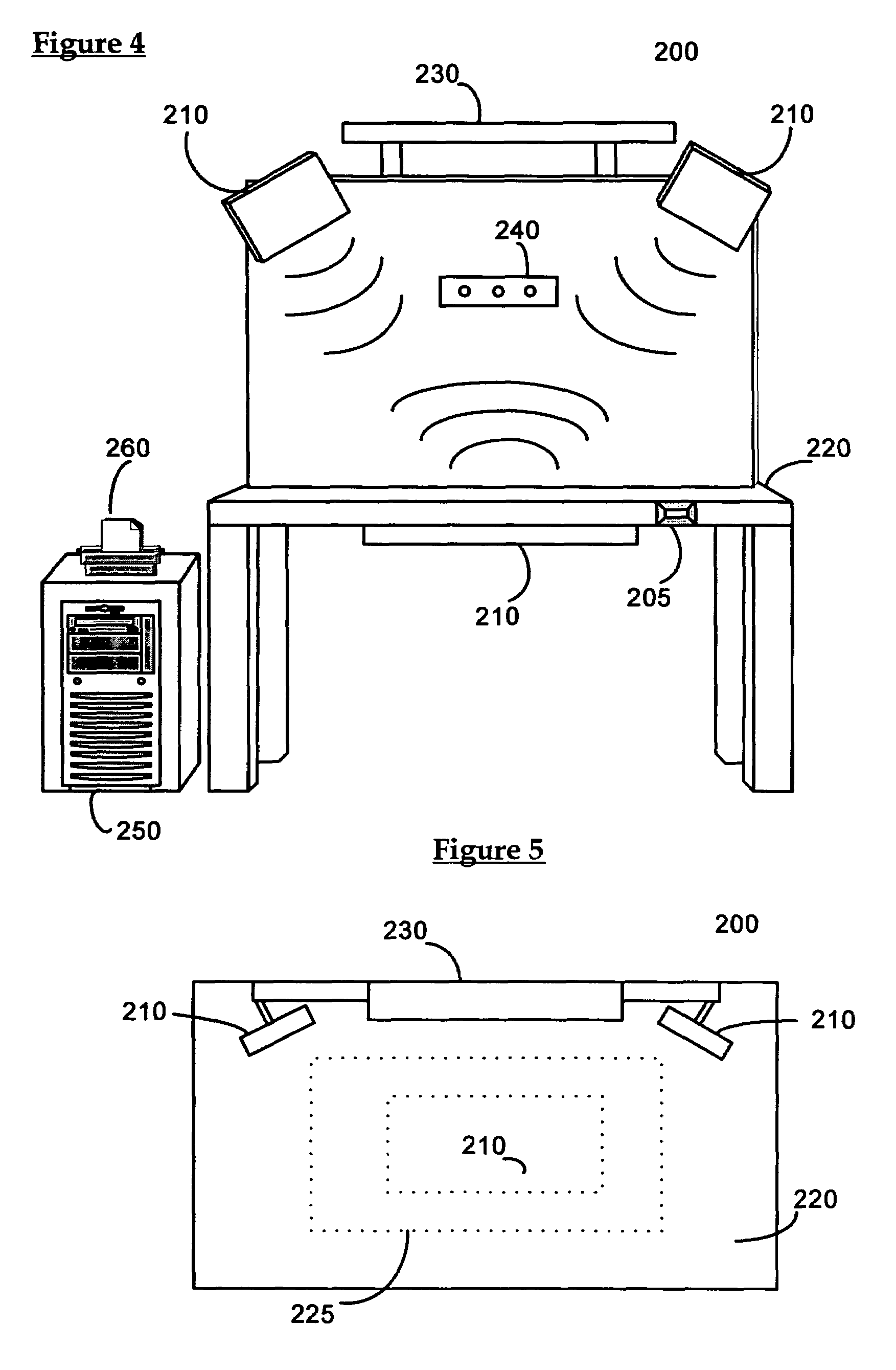Workstation RFID reader for surgical instruments and surgical instrument trays and methods of using same
a technology of surgical instruments and workstations, applied in the field of radio frequency identification techniques, can solve the problems of surgical instruments that eventually reach the end of their life cycle, various instruments on a given tray may become lost, and existing methods for performing these necessary functions are overly reliant on costly human interpretation, so as to reduce handling costs and accurate and rapid tracking of instruments
- Summary
- Abstract
- Description
- Claims
- Application Information
AI Technical Summary
Benefits of technology
Problems solved by technology
Method used
Image
Examples
Embodiment Construction
[0029]The following description is intended to convey a thorough understanding of the invention by providing specific embodiments and details involving automating and adding value to medical and surgical instruments, and instrument kits. It is understood, however, that the invention is not limited to these specific embodiments and details, which are exemplary only. It further is understood that one possessing ordinary skill in the art, in light of known systems and methods, would appreciate the use of the invention for its intended purposes and benefits in any number of alternative embodiments, depending upon specific design and other needs.
[0030]In various exemplary embodiments, the inventive apparatus comprises an RFID workstation reader apparatus having a substantially planar work surface of sufficient dimensions to accommodate at least one surgical instrument tray. In various exemplary embodiments, the workstation reader apparatus of the present invention is mounted on one more ...
PUM
 Login to View More
Login to View More Abstract
Description
Claims
Application Information
 Login to View More
Login to View More - R&D
- Intellectual Property
- Life Sciences
- Materials
- Tech Scout
- Unparalleled Data Quality
- Higher Quality Content
- 60% Fewer Hallucinations
Browse by: Latest US Patents, China's latest patents, Technical Efficacy Thesaurus, Application Domain, Technology Topic, Popular Technical Reports.
© 2025 PatSnap. All rights reserved.Legal|Privacy policy|Modern Slavery Act Transparency Statement|Sitemap|About US| Contact US: help@patsnap.com



